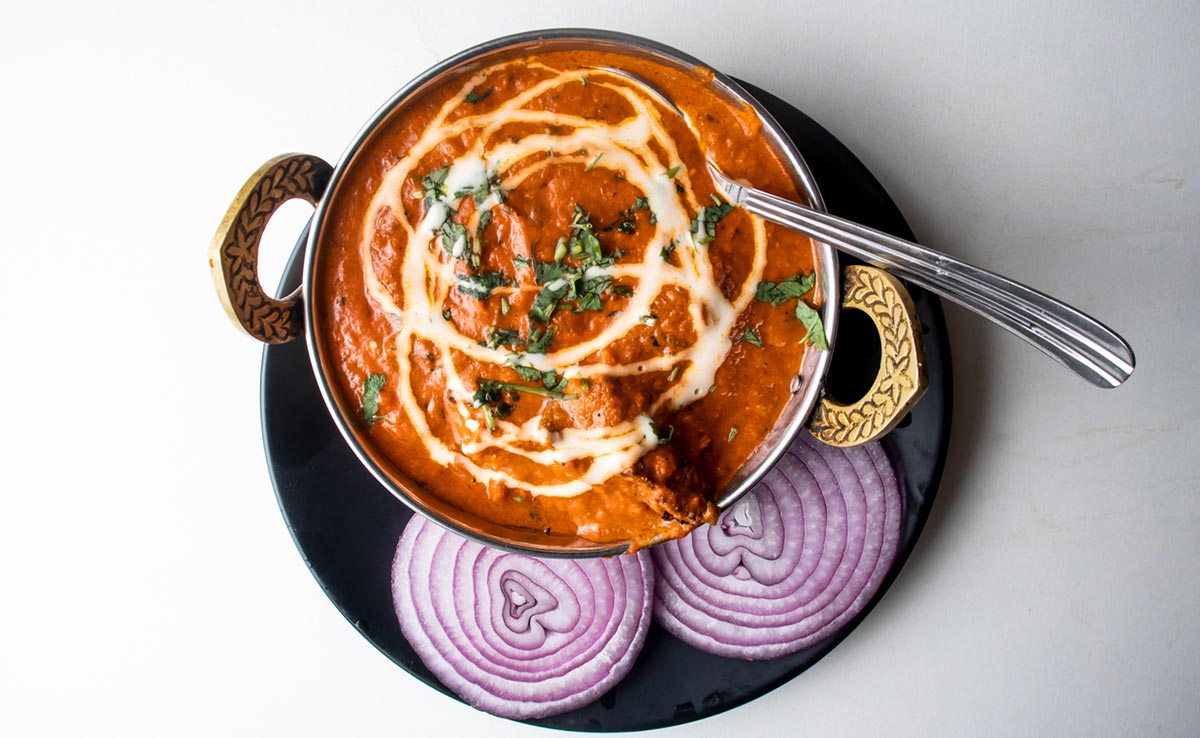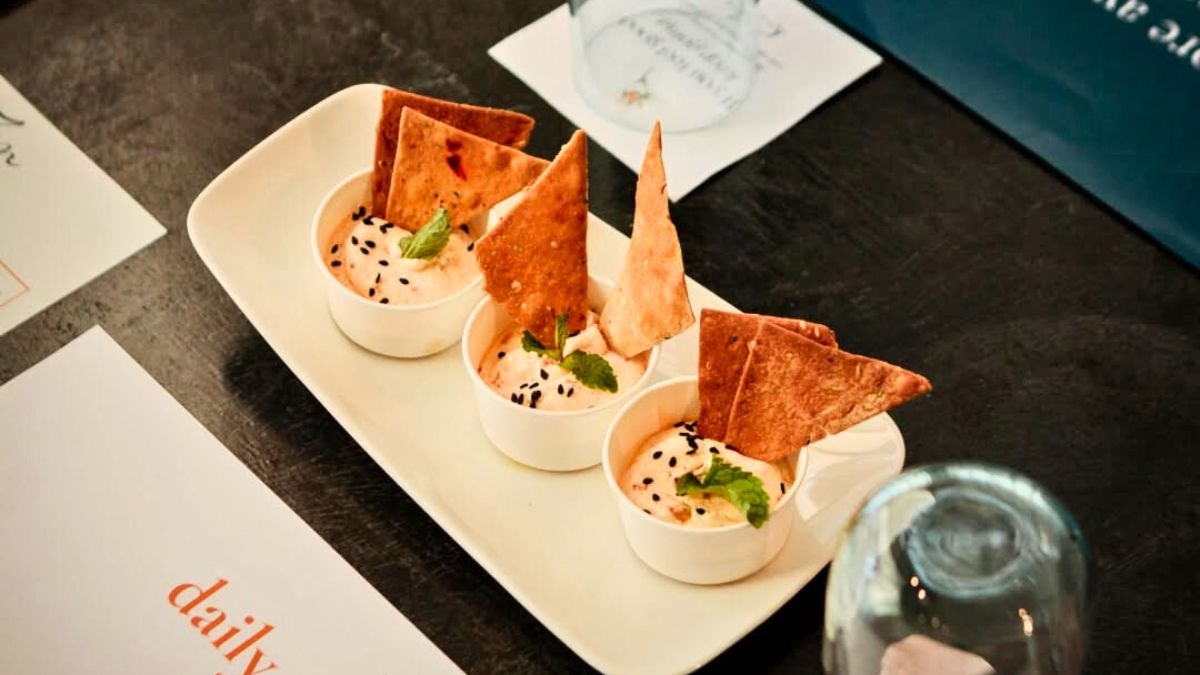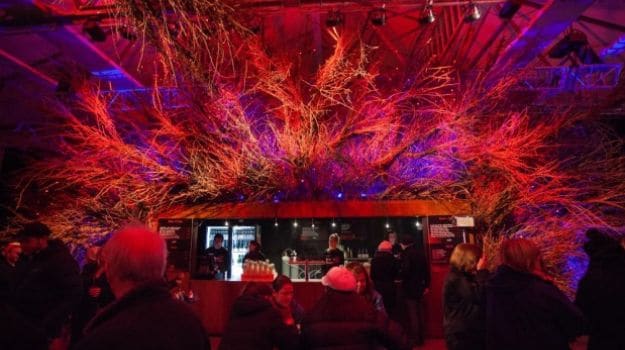The winter feast at Dark Mofo. Photograph: Remi Chauvin/MONAOne of the most popular events at the Tasmanian capital’s winter solstice celebration is the feast. Getting in is the first challenge – but how’s the food?It’s the first day of the winter feast, the highlight on the Dark Mofo festival schedule, and I am drenched by the rain. A steward tells me that the feasting shed is packed and I’ll have to wait outside, which isn’t a great start. It’s cold and I’m hungry.
The feast, held down by the Salamanca wharf, is a cross between a medieval wedding celebrations and Christmas. This modern version, held over five nights and a favourite of locals, celebrates the winter solstice. Tickets to enter the shed cost between $10 and $20; food and drink is bought from stall holders.

Once inside, the atmosphere is heady. From behind high Venetian-style doors a fiddler plays bouncy Irish jig that echoes to the back of the hall. Long trestle tables extend down the centre where people have packed in, shoulder to shoulder. Getting a seat isn’t going to be easy.
The dishes are mostly cooked by local chefs and companies and the choice is overwhelming. The Bruny Island Cheese Company stall sells bread dripping with fondue, while in the stand opposite the Nicholls Rivulet organic farm sells Moo Brew dark ale pies. Also popular are the Tasmanian Chilli and Beer Company’s ginger beers.
Jo Cook, the event’s food curator, says most dishes come in under $10 to encourage tastings of more than one dish – though spending a fortune on the variety of food on offer wouldn’t be hard. In an effort not to overwhelm visitors with choice – and allow to producers to focus on key dishes – Cook also suggests that only four items are sold on each menu.

At the Ashbolt Farm stall, Anne Ashbolt is keen for us to try her spiced elderberry and vodka – a lovely, hot and refreshing drink that is a great alternative to the wine, beer and cider on sale elsewhere. A few stalls along the harder alcohol that requires no heat to be fiery is on sale: there is a special winter feast edition of Tasmania’s award-winning whisky Sullivan’s Cove to try. The taste, the bartender tells me, is a mix of the two existing flavours: the bitter-chocolate French oak malt and the burnt-sugar American oak malt. He expects the bottles – at $300 a pop – will sell out quickly.
No night at the winter feast is complete without lashings of cider. One of my favourites is Willie Smith’s dark organic cider, made from apples in the Huon valley farm run by four generations of the same family. Compared with the fizzy, tangy fruit cider that I drink during the summer months, it has deeper flavour that suits the chilly night.
But enough of apples. Meat is king at the feast. There is an impossibly diverse range of cuisines and meats to choose from: wallaby burritos, chorizo and chimichurri and pork dumplings, Indian and Ethiopian curries and Turkish gozleme. The slow-cooked pork wrap from Mount Gnomon Farm is to die for – the pigs are a rare breed grown in a wild part of north-western Tasmania.
Over at Truckle & co, owner Silvana Taurian serves up “stag snags” made of venison and pigs reared on her grounds especially for the winter feast. Many of the stalls here are run by small, independent businesses. “This was the food we grew up eating at home,” Taurian says. “Dad would always go out venison hunting and bring back a stag.” For a straight-up sausage in a bun with sweet chilli and onion, it’s hard to go wrong here.

For something different I try Rough Rice’s filling Mexican wallaby dish, with single-estate mescal. The wallaby is served with rice, four types of nuts and seeds and is full of flavour and texture, although I have to park half of my pot as the rice is a heavy prospect this late in the evening. It does win full points for the best chilli kick of the night.
After all of this, do I have room for dessert? You bet. There are long queues at Lady Hester’s Donuts, a crowd favourite, so I opt for the dark coffee and rum cake made by Rasberry Fool, the team behind a small cafe in Hobart. Delicious!
At 10pm, almost three hours after I arrived, the crowds have finally thinned. A worker wraps a thick stack of notes with a rubber band, counting takings, as staff everywhere start to pack up for the night and prepare for the next. Even though I’m hazy from tiredness, with an overfull belly, I’m still reluctant to leave the warmth of the shed and face the relentless rain outdoors. Are there any gems I’ve missed, I ask Cook. “There’s so much more to try here, including all of the barbecues outside,” she says. “You’ll just have to come back next time.”






